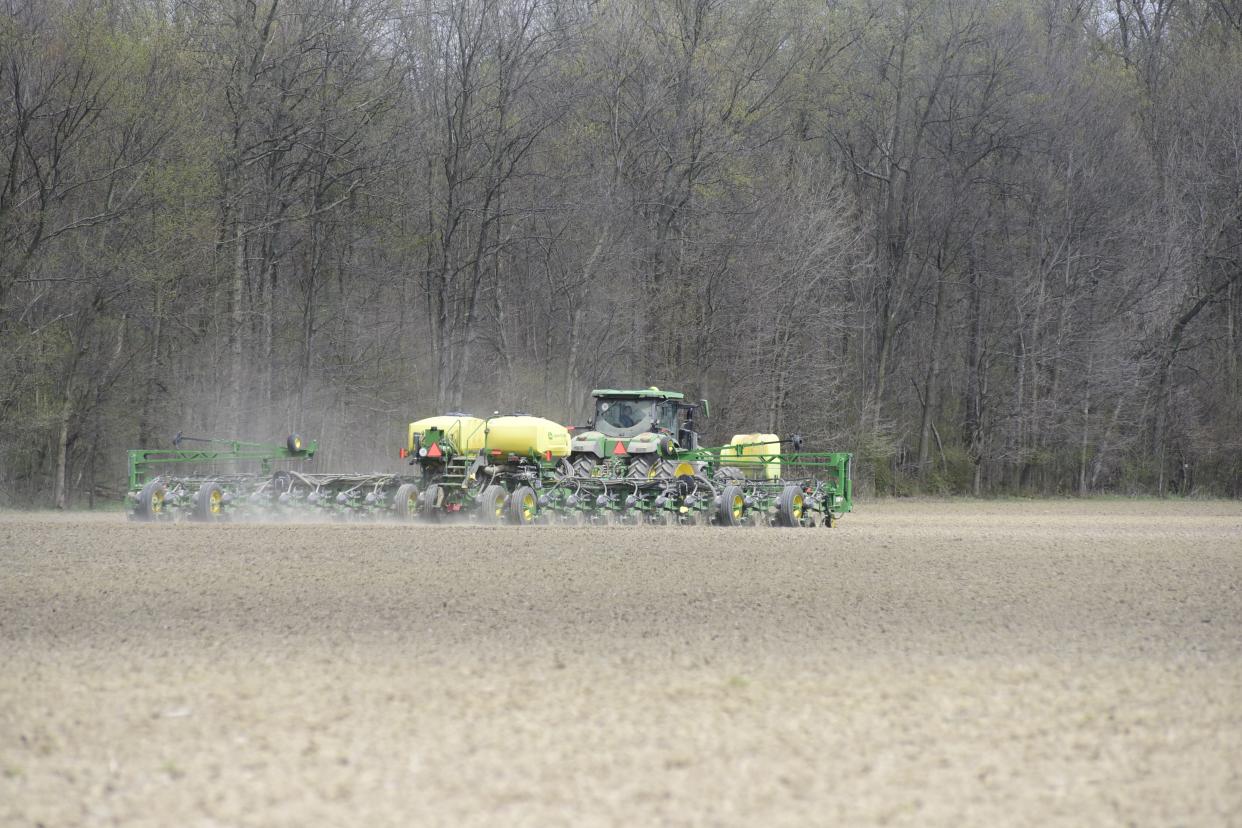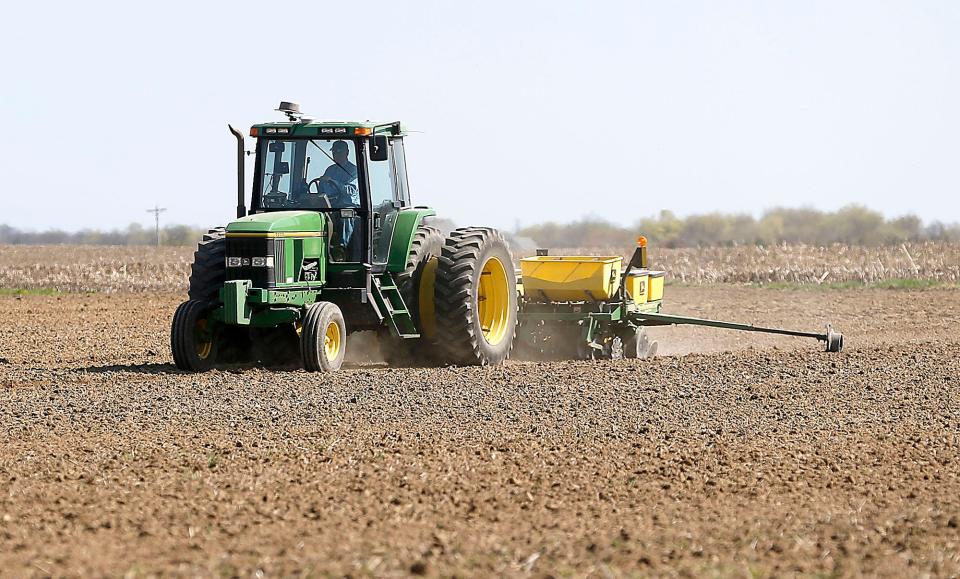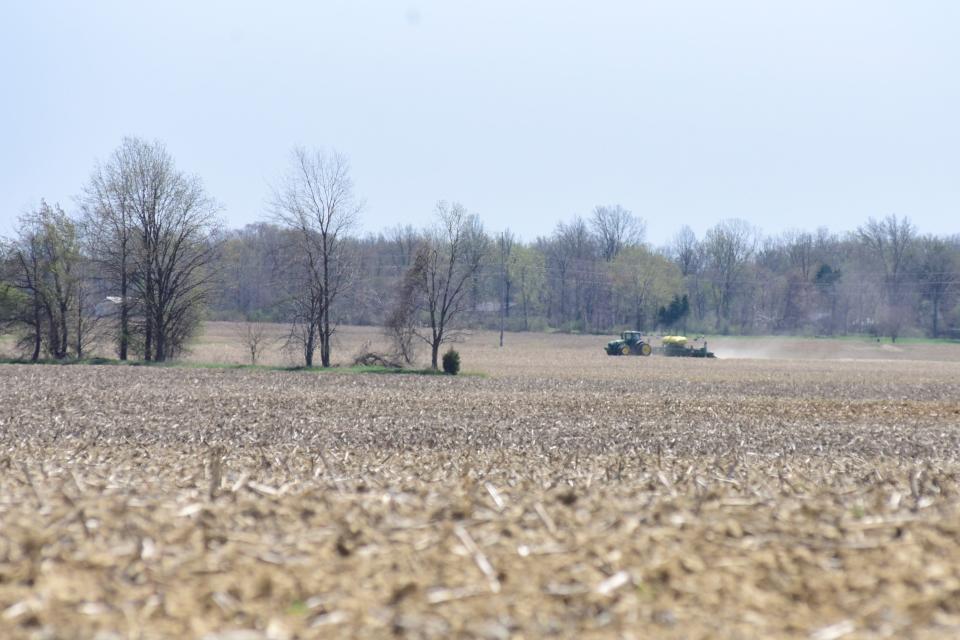Earlier planting and higher than ever costs this spring for most Ohio farmers

Thousands of kernels flowed from the seed box into the warm soil as John Schroeder watched a farmhand plant this year's corn crop.
"This is the best spring we've ever had," the longtime farmer said.
It's a big statement for a man who has been farming his entire life. His parents bought their farm between Shelby and Crestline in 1954. Then, they kept buying land.
"We farm in multiple counties," Schroeder said. "Thousands of acres."
This year, all of their soybeans were planted by Wednesday. The corn was schedule to all be sown by the end of the week.
"This is one for the record books," Schroeder said.
'It is important to plant soybeans early'
Earlier planting is a trend that's growing across the Buckeye State, according to an article published Thursday in Ohio's Country Journal.
It's getting so popular that Laura Lindsey, an OSU Extension small grains and soybean specialist, planted test plots in Wayne and Clark counties the last week of March and the first week of April.
"We really wanted to see how early we can plant soybeans," Lindsey told the trade journal. "Almost every agronomist will tell you that it is important to plant soybeans early."

The earliest planting dates will change every year, though, as the weather dictates.
Seeds need the ground temperature to warm to at least 50 degrees before they will germinate, according to the Pioneer Hi-Bred website, a U.S. producer of ag seed.
Since there have already been several days this month where temperatures in North Central Ohio broke 70 degrees, most farmers feel the ground is primed for planting.
"The biggest fear would be the frost," Schroeder said. "It's really germinated fast and it will be out of the ground here before we know it, but we don't really want it to get in a great big hurry."
'The yield advantage is worth the risk'
The Farmer's Almanac predicts this year that the last frost will be May 2 in Mansfield and May 8 in Wooster.
That date is based on historical data and is not necessarily what farmers will see play out in the coming days.
"The probability of a frost occurring after the spring frost date or before the fall frost date is 30%," the almanac warns. "There is still a chance of frost occurring before or after the given dates."

The odds of a frost coming later may seem concerning, but most farmers don't mind replanting a few low-lying areas next month to give the surviving crop a chance to flourish.
"There's always a risk of frost," Schroeder said. "But the yield advantage is worth the risk in soybeans to get them planted early. We've proven that time and time again. That's pretty common practice anymore. People are trying to get their beans planted in April."
'The most expensive crop in my 40-plus years'
High yields are important to farmers, since having more crops to sell means more income for the farm.
Or, at least more money in the bank temporarily. Last year's revenue — and for some farms, credit on this year's revenue — is used to pay for the myriad inputs a farm requires.
Inputs include the cost of seed, the price of the fuel it takes to get it planted, then all of the fertilizers, herbicides and pesticides it takes to help the crops grow.
Then there's insurance, purchase and repair of machinery and then, lastly for most farmers, a living wage.
"Input costs," Schroeder said. "This is the most expensive crop in my 40-plus years of farming that I've ever had."
It's not just in one area, either.
"Machinery prices are sky high. Fuel costs are sky high," Schroeder said. "So yeah, there's a lot of risk out here."
Those concerns affect Ohio farms ranging in size from 150 acres to 15,000 acres.
"It's really not anything to do with size," Schroeder said. "Everything is relative. You have to produce a good crop and you have to market well."
Despite the cost, they're going to keep trying as hard as they can to grow the best crop they possibly can.
"Farming is a great life," Schroeder said. "This is a family farm. We're passionate about it."
ztuggle@gannett.com
419-564-3508
Twitter: @zachtuggle
This article originally appeared on Mansfield News Journal: Most Ohio farmers planting early, facing highest costs ever

